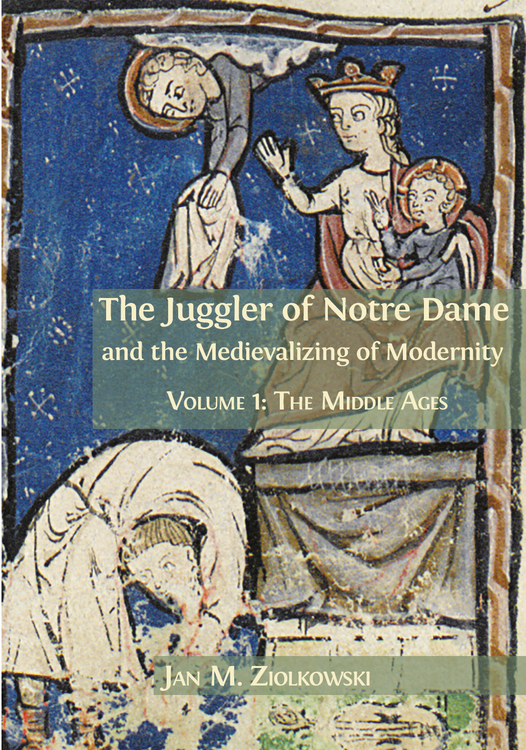Congratulations to Professor Jan Ziolkowski upon the release of the first volume of his latest work, The Juggler of Notre Dame and the Medievalizing of Modernity. The series is comprised of six volumes, the rest of which are forthcoming in 2018:

Vol. 1: The Middle Ages
Vol. 2: Medieval Meets Medievalism
Vol. 3: The American Middle Ages
Vol. 4: Picture That: Making a Show of the Jongleur
Vol. 5: Tumbling into the Twentieth Century
Vol. 6: War and Peace, Sex and Violence
The entire book can be read for free, downloaded, and purchased in several print and digital formats from OpenBook Publishers.
From the publisher:
"This ambitious and vivid study in six volumes explores the journey of a single, electrifying story, from its first incarnation in a medieval French poem through its prolific rebirth in the nineteenth and twentieth centuries. The Juggler of Notre Dame tells how an entertainer abandons the world to join a monastery, but is suspected of blasphemy after dancing his devotion before a statue of the Madonna in the crypt; he is saved when the statue, delighted by his skill, miraculously comes to life.
Jan Ziolkowski tracks the poem from its medieval roots to its rediscovery in late nineteenth-century Paris, before its translation into English in Britain and the United States. The visual influence of the tale on Gothic revivalism and vice versa in America is carefully documented with lavish and inventive illustrations, and Ziolkowski concludes with an examination of the explosion of interest in The Juggler of Notre Dame in the twentieth century and its place in mass culture today.
The Juggler of Notre Dame and the Medievalizing of Modernity is a rich case study for the reception of the Middle Ages in modernity. Spanning centuries and continents, the medieval period is understood through the lens of its (post)modern reception in Europe and America. Profound connections between the verbal and the visual are illustrated by a rich trove of images, including book illustrations, stained glass, postage stamps, architecture, and Christmas cards.
Presented with great clarity and simplicity, Ziolkowski's work is accessible to the general reader, while its many new discoveries will be valuable to academics in such fields and disciplines as medieval studies, medievalism, philology, literary history, art history, folklore, performance studies, and reception studies."